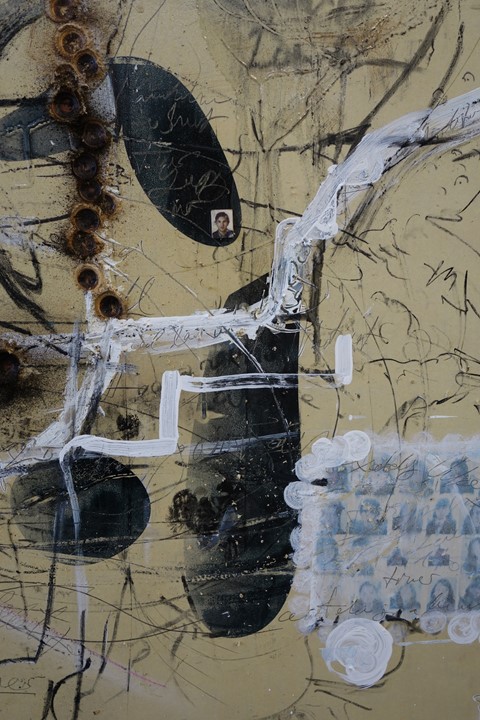The prolific artist welcomes AnOther into his studio, to share an exclusive preview of his biggest show to date
Over the past decade, the New York-based, Israeli artist Uri Aran has been exploring the tropes of manipulation in confined social circumstances. He famously created a faux hospital for the city’s inaugural Frieze Art Fair, where his friends took on the roles of patients and doctors, and an exploration of power dynamics – understandings of what is public and private – quickly developed in a comical-cum-eery theatrical form. Another buzzed-about exhibit at Gavin Brown New York invited viewers to take a manipulated found object and a painted artwork that merged ideas of work and play with suggestiveness – be it a desk with cookies glued to one surface, implying a dissolution of constructs of labour and leisure, or a constructed aquarium with tropical fish crawling out played next to an office table, hinting at a vacation somewhere far away, midway through the working week.
This week, Aran unrolls what might just be his biggest exhibition, and certainly the most nuanced exploration of our human tendencies to categorize and create hierarchy, to date, at Gavin Brown's vast new gallery in Rome.
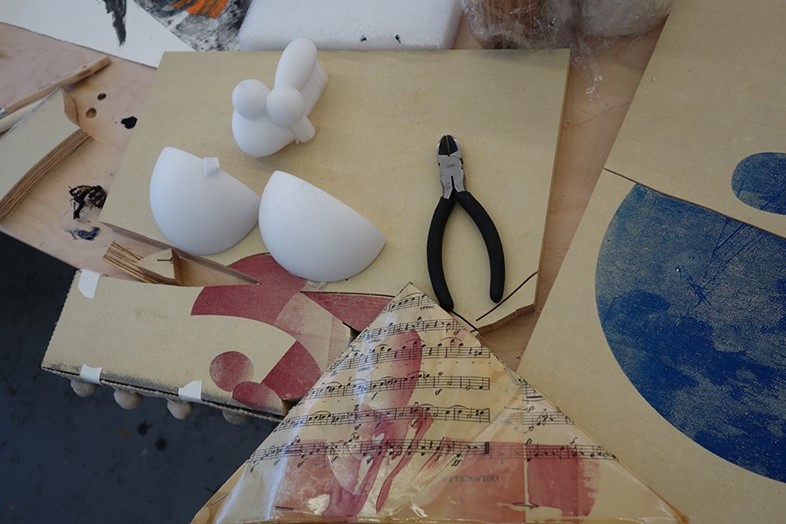
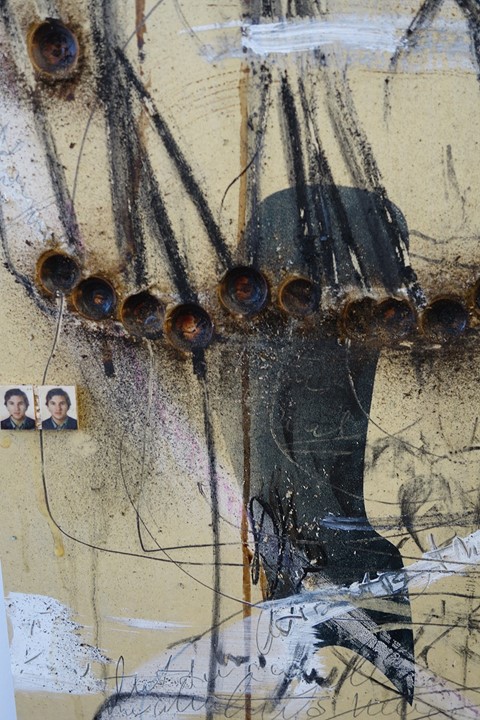
“I was interested in social situations, within a group that is constantly together, within a limited space and category, with an objective at hand,” explains Aran, from the Lower East Side’s 88 Orchard coffee shop, of the starting point of the exhibition. “So one example would be a course or a class. And within a class like that you have a group and a group dynamic that is hopefully situated with specific or different ages, gender, tastes, race, background, and so on, that are almost flattened in this particular situation that allows them to act out.”
The show has several components – pieces incorporating sculpture, painting, and photography (often of Aran’s family members); found objects; video (“There’s almost something nostalgic about it in a way,” said Aran of the movie component. “It’s almost a manifestation of a future past. We’re using contemporary technology, but its still charged with screens of nostalgia, because there are lenses in between us.”); and a performance that involves several professional jazz musicians, a modern dancer, and Aran as a director, manipulating the group throughout the show.
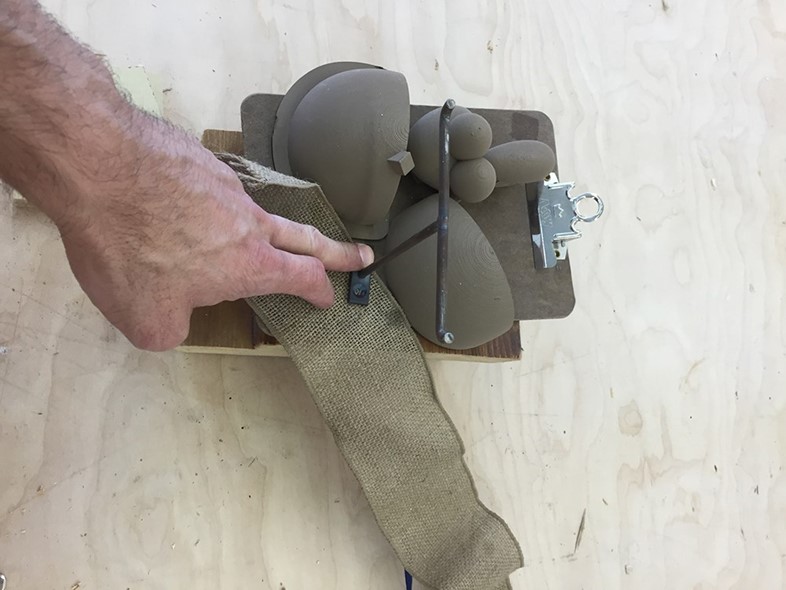
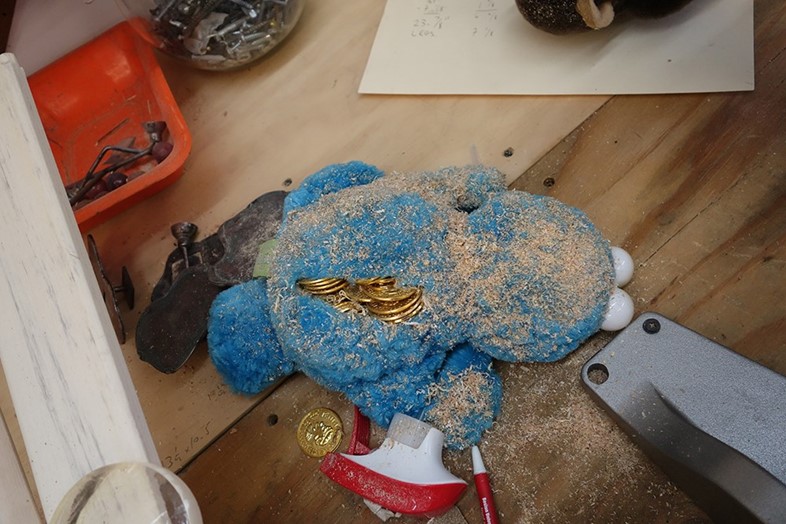
The general idea is that this group is a part of an acting class. They move when Aran tells them to move, and each student replicates certain actions (dancing together, telling the same exact story, but in their own voice, own accent, one after the other) again and again.
“I’m interested in tropes related to the ambitions and acting out – or the formal manifestations – within a group,” explains Aran. “So, starting points for that would be different things that I write or read. Like books or texts on method acting or group situations, power group dynamics between the teacher or the student. Or trying to find hierarchy in terms of quantity and quality between a given situation that is supposedly liberal or non-judgmental. Like, art. Within that – who is the most talented? Who is the least talented? Who is left out? How do the most talented student male and the most talented student female find each other? Or of the same gender, what happens there? Does that play any part? You see what I mean? How does whoever is in charge shift paradigms, or power situations, through formal exercises, but without being able to separate personalities?”
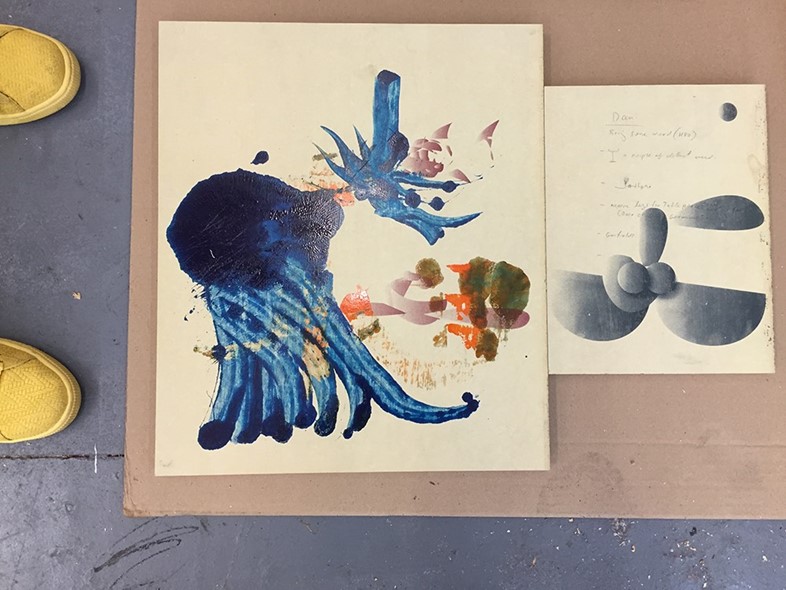
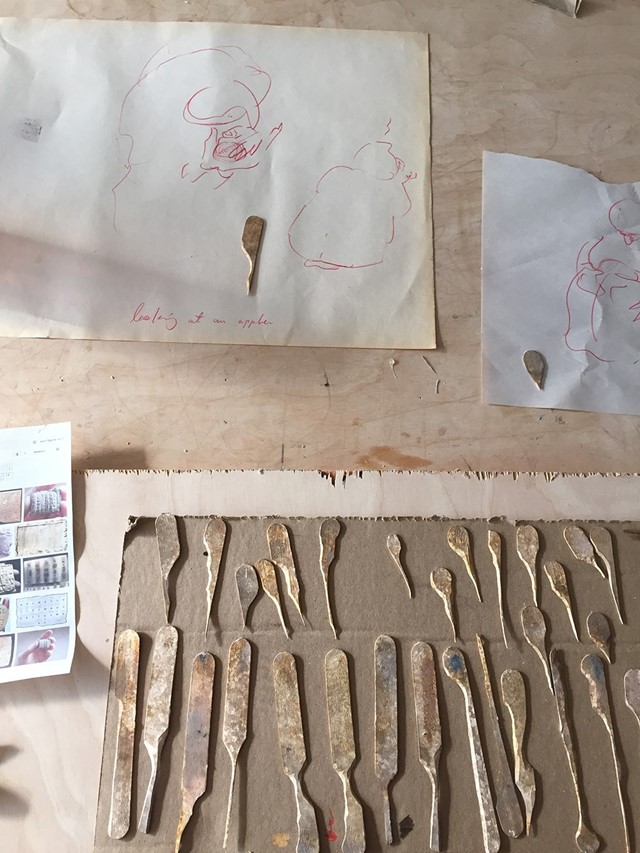
The texts are read, repeated, and the images in the photographs are simple and stripped down. Dancers walk up to each other and say, “I’m angry,” or “I’m friendly,” and abstract, monochromatic broad-stroked paintings contain signifiers of family or a type of person in the form of little photographs placed within.
“I treat [these] as my tools. Really my palette," said Aran. Repetition is key and organization of repeated visual cues and read pieces lead the viewer to look past the objects or the stories themselves, and into what surrounds them.
"For instance, [there are] different people with different accents or coming from different sources or medias sayings the same thing," said Aran. "One guy with a certain accent telling a story that actually happened to him, then another guy saying the exact same story with a specific accent and a different effect. Then another one, a third one, saying the same story. So it almost becomes a formal exercise on how to say this one story that is losing meaning in terms of content, it’s still there, right? Its almost dissolving into a formal thing that almost has musicality and at the same time, a physical presence that we project whatever it is that we feel about the British accent or the American accent or the foreign accent and so on and how they say things and what language they use – colloquial or high or low or whatever it is – to tell the same story."


"In that sense, it's almost like an object being charged with meaning," he continued. "Many times, people ask me who are those people, or who are those animals, or what are those objects [that I work with] and they refer to some sort of suggestive personal history or autobiographical note, and many times, for me, that would be the important thing. That specific question. If that happens, for me, it is an activation of an object, of a photograph. The question – if there is some sort of familiarity with me, that’s what I’m trying to get."
Uri Aran, "Uri Aran" will be on view from September 18 to October 17 at the Gavin Brown gallery, Rome
